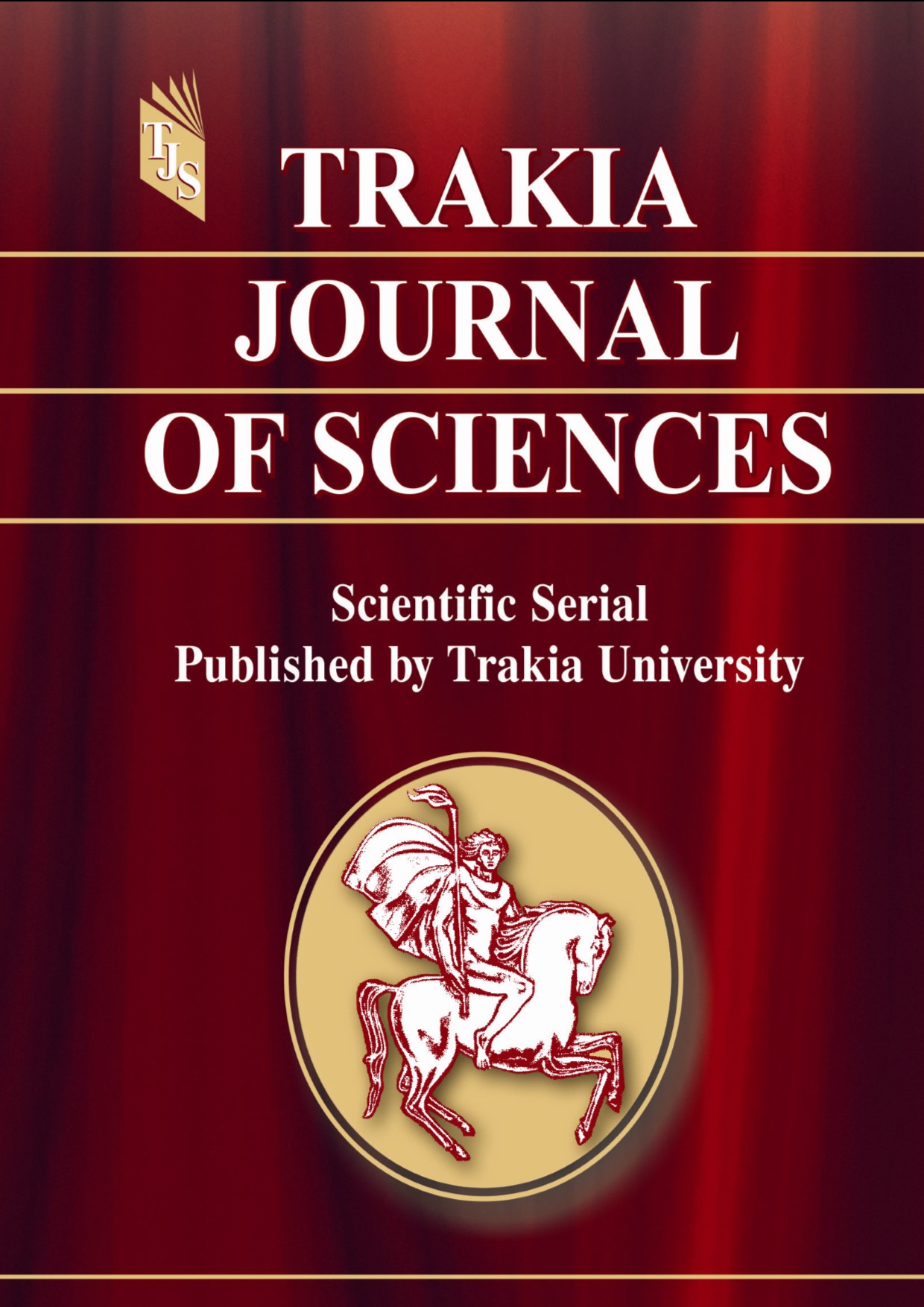POTENTIAL PRO-INFLAMMATORY EFFECTS OFHIGH-CALORIE DIETS MEASURED BY BLOOD NEUTROPHIL H2O2PRODUCTION
DOI:
https://doi.org/10.15547/tjs.2025.03.004Keywords:
high-fat diet, high-carbohydrate diet, reactive oxygen species, neutrophil, inflammationAbstract
PURPOSE: The aim of the study was to evaluate the potential pro-inflammatory effects of different high-calorie diets in a rat experimental model. METHODS: A total of 56 male Wistar rats were included in the experiment. Animals were divided into seven equal groups – one pool group, in which tested indicators were evaluated before the start of the dietary regimens, and six more groups of rats, which were fed different diets for a period of five weeks – standard diet (SD), high-fat diet (HFD), high-carbohydrate diet (HCHD), high-fat high-carbohydrate diet (HFHCHD), standard diet plus E960/RA60 (SDRA) and high-fat diet plus E960/RA60 (HFDRA). Total white blood cell count and differential were measured using an automated analyzer. H2O2 production by blood neutrophils was measured using the nitroblue tetrazolium reduction test on a blood smear. RESULTS: Results demonstrate that some of the high-calorie diets, which contain sucrose, significantly increase H2O2 production by blood neutrophils. CONCLUSIONS: Diets with high content of sucrose may have the potential to induce cellular damage and subsequent inflammatory response in certain tissues.
References
Lee, S. H., Park, S. Y. and Choi, C. S., Insulin resistance: from mechanisms to therapeutic strategies. Diabetes & metabolism journal, 46(1): 15-37, 2022.
Aedh, A. I., Alshahrani, M. S., Huneif, M. A., Pryme, I. F. and Oruch, R., A glimpse into milestones of insulin resistance and an updated review of its management. Nutrients, 15(4): 921, 2023.
Zhao, X., An, X., Yang, C., Sun, W., Ji, H. and Lian, F., The crucial role and mechanism of insulin resistance in metabolic disease. Front Endocrinol (Lausanne), 14: 1149239, 2023.
Salari-Moghaddam, A., Keshteli, A. H., Haghighatdoost, F., Esmaillzadeh, A. and Adibi, P., Dietary glycemic index and glycemic load in relation to general obesity and central adiposity among adults. Clinical Nutrition, 38(6): 2936-2942, 2019.
Wang, L., Wang, H., Zhang, B., Popkin, B. M. and Du, S., Elevated fat intake increases body weight and the risk of overweight and obesity among Chinese adults: 1991–2015 trends. Nutrients, 12(11): 3272, 2020.
Meex, R. C., Blaak, E. E. and van Loon, L. J., Lipotoxicity plays a key role in the development of both insulin resistance and muscle atrophy in patients with type 2 diabetes. Obesity Reviews, 20(9): 1205-1217, 2019.
Bakinowska, E., Krompiewski, M., Boboryko, D., Kiełbowski, K. and Pawlik, A., The role of Inflammatory mediators in the pathogenesis of obesity. Nutrients, 16(17): 2822, 2024.
De Luca, C. and Olefsky, J. M., Inflammation and insulin resistance. FEBS letters, 582(1): 97-105, 2008.
Han, C. Y., Roles of reactive oxygen species on insulin resistance in adipose tissue. Diabetes & metabolism journal, 40(4): 272, 2016.
Calco, G. N., Fryer, A. D. and Nie, Z., Unraveling the connection between eosinophils and obesity. Journal of Leucocyte Biology, 108(1): 123-128, 2020.
Park, J. M., Lee, J. W., Shim, J. Y. and Lee, Y. J., Relationship between platelet count and insulin resistance in Korean adolescents: a nationwide population-based study. Metabolic syndrome and related disorders, 16(9): 470-476, 2018.
Hulbert, A. J., Turner, N., Storlien, L. H. and Else, P. L., Dietary fats and membrane function: implications for metabolism and disease. Biological Reviews, 80(1): 155-169, 2005.
Haga, Y., Ishii, K. and Suzuki, T., N-glycosylation is critical for the stability and intracellular trafficking of glucose transporter GLUT4. Journal of biological chemistry, 286(36): 31320-31327, 2011.
Monteomo, G. F., Kamagate, A. and Yapo, A. P., Effects of metabolic syndrome on blood cells to Wistar rats. J. Diabetes Metab. Disord. Control, 5(6): 222-225, 2018.
Souza, F. D. C. D. A., Duncan, W. P. and Carvalho, R. P., Hematology and plasma biochemistry in rats fed with diets enriched with fatty fishes from Amazon region. Revista de Nutrição, 27: 547-555, 2014.
Unruh, D., Srinivasan, R., Benson, T., Haigh, S., Coyle, D., Batra, N., ... and Bogdanov, V. Y., Red blood cell dysfunction induced by high-fat diet: potential implications for obesity-related atherosclerosis. Circulation, 132(20): 1898-1908, 2015.
De Oliveira, M. C., Silveira, A. L. M., de Oliveira, A. C. C., Lana, J. P., Costa, K. A., Vieira, É. L. M., ... and Ferreira, A. V. M., Eosinophils protect from metabolic alterations triggered by obesity. Metabolism, 146: 155613, 2023.
Hu, Y. and Chakarov, S., Eosinophils in obesity and obesity-associated disorders. Discovery Immunology, 2(1): kyad022, 2023.
Patel, S., Patel, S., Kotadiya, A., Patel, S., Shrimali, B., Joshi, N., ... and Jain, M., Age-related changes in hematological and biochemical profiles of Wistar rats. Laboratory Animal Research, 40(1): 7, 2024.
Jiang, S., Liu, H. and Li, C., Dietary regulation of oxidative stress in chronic metabolic diseases. Foods, 10(8): 1854, 2021.
Checa, J. and Aran, J. M., Reactive oxygen species: drivers of physiological and pathological processes. Journal of Inflammation Research, 1057-1073, 2020.
Turrens, J. F., Mitochondrial formation of reactive oxygen species. The Journal of physiology, 552(2): 335-344, 2003.
Pisarczyk-Wiza, D., Zozulinska-Ziolkiewicz, D., Wysocki, H. and Wierusz-Wysocka, B., Increase in glycaemia stimulates reactive oxygen species (ROS) production by polymorphonuclear neutrophils in type 2 diabetic patients. Journal of Pre-Clinical and Clinical Research, 5(1), 2011.

Downloads
Published
Issue
Section
License

This work is licensed under a Creative Commons Attribution-NonCommercial 4.0 International License.


